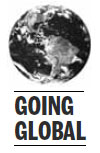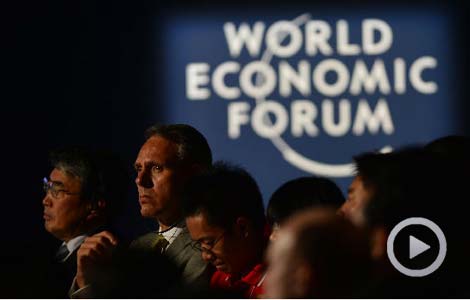Chinese companies rethink export strategy
Updated: 2013-09-17 07:24
By Li Jiabao (China Daily)
|
||||||||
As the "Made in China" label is still considered a symbol of cheap and poorly manufactured products, Chinese companies face huge challenges to get their exports recognized globally, reports Li Jiabao in New York.
"Made in China" might be a term known worldwide, but few Chinese brands are recognized among Western consumers.
The image of Chinese goods has been damaged by scandals in past years. But "the quality of Chinese exports to the United States has increased remarkably compared with that two decades ago. And the image of 'Made in China' also improved," said Stephen A. Orlins, president of the National Committee on United States-China Relations.
"What's more, there was no quality scandal in Chinese exports to the US this year," Orlins noted, adding that scandals can damage many other aspects in addition to the companies' images.
Jack Rosen, chairman of the American Jewish Congress and the chief executive officer of Rosen Partners LLC, a New York-based real estate firm, echoed that view.
"China's products are far better than its image," Rosen said.

The "Made in China" label is one of the most recognizable labels in the world today due to the country's rapidly developing manufacturing industry. China's position as the world's largest exporter places the label on a wide range of goods from clothing to electronics. However, too many times, the label is a symbol of cheap and poorly manufactured products.
The US was China's second-largest trade partner and the country's top export market last year. Bilateral trade rose 8.5 percent year-on-year to $484.68 billion, accounting for 12.5 percent of China's overall trade, while the country's foreign trade expanded 6.2 percent year-on-year in 2012.
Chinese exports to the US increased 8.4 percent year-on-year in 2012, while imports were up 8.8 percent, leaving a trade surplus of $18.92 billion, according to China's General Administration of Customs.
In the first seven months of the year, China-US trade increased 6.2 percent from a year earlier, with Chinese exports rising 2.3 percent year-on-year and its imports surging 16.2 percent, according to the customs agency.
In the same period, bilateral trade with Canada, which accounted for about 1.4 percent of China's overall trade, rose 6.0 percent year-on-year. Chinese exports to Canada went up 2.6 percent year-on-year in the January-July period, while its imports from Canada rose 9.9 percent, according to the customs agency.
"The Made in China label now reflects the industrial upgrading in China, and Canada now gets labor-intensive products from China as well as high-tech ones," said Yu Jianwei, commercial counselor at the Consulate General of China in Toronto.
Slowdown
As the economic growth slowdown in developed economies reduced overseas demand in recent years and foreign trade in the world's second-largest economy eased its double-digit growth pace, China's government pledged to create a new competitive edge for its foreign trade, supported by technology, brand, quality and services.
China's new leadership wants to transform the country's economic growth model and shift it from the heavy reliance on investment and exports to a consumption-driven pattern, which is believed to be more sustainable.
Chinese exports are very important to US consumers. But "the biggest problem for Chinese products in the US is the lack of their own brands, even though Chinese manufacturing can make a living with the OEM model," Orlins said.
He added that US consumers may not know more than three Chinese brands other than Tsingtao Beer, Haier and Lenovo, which is very few compared with their knowledge of Japanese and South Korean brands, which are frequently seen in the US. However, US imports from China are much larger than those from Japan and South Korea, Orlins noted.
Meanwhile, compared with past decades, US importers have diversified their sources amid rising costs for Chinese goods and quality concerns.
Because of higher salaries, land use fees, and utility costs, some labor-intensive industries in China in recent years moved their plants to emerging economies in Southeast Asia. Meanwhile, building up brands has been an objective of local governments and companies to boost China's share of the global trade market and move up the ladder in the global industrial chain.
However, Orlins said that the government's efforts may backfire as the establishment of Chinese brands should be mainly the result of the companies' achievements. But the government can help with research and other services, he noted.
Rosen added that the business environment is very important and that China and the US have different standards for many things. He said that the biggest obstacle for China is learning what Western consumers take for granted and provide the products that consumers really need.
"The (economic) system, the history and the demands of local consumers are all pieces of a puzzle for China to enhance its products. The country's transition of its economic growth model will take some time," Rosen added.
Some Chinese companies have already achieved success in the US market.
"As one of the only photovoltaic module suppliers with a footprint of this magnitude in the region, we are deeply appreciative to our customers for their support. And we could not have reached this milestone without our team, who consistently raise the standard for customer service and dedication to delivering quality products," said Robert Petrina, managing director of Yingli Green Energy Americas Inc.
Yingli Green Energy Holding Co Ltd - a leading solar energy company and one of the world's largest vertically integrated photovoltaic manufacturers - said in late August that its fully owned subsidiary, Yingli Green Energy Americas, had achieved the historic milestone of more than 1 gigawatt of photovoltaic modules delivered to over 30,000 projects across the American continents and the Caribbean.
According to the California Solar Initiative, 1 GW of installed photovoltaic facilities meets the energy needs of over 200,000 average American households.
Yingli Americas' projects span the residential, commercial, and utility markets, and include more than 28,000 homes, 3,000 institutions and businesses, and 50 utility-scale projects.
Many iconic institutions in the Americas use Yingli Green Energy's photovoltaic modules, including Harvard University, Kaiser Permanente hospitals, the New York Jets team headquarters, and Rio de Janeiro's Maracana stadium.
"Solar energy has grown in importance as an investment opportunity throughout the Americas. As the world's largest PV modules manufacturer, we are pleased to contribute to and propel the expansion of this vital clean energy source in the region and around the world," said Liansheng Miao, chairman and chief executive officer of Yingli Green Energy.
Brands
Meanwhile, Chinese companies are also acquiring brands, which is the most efficient way to enhance the Made-in-China concept, said Rosen, adding that the country doesn't seem to have a system for learning, trying and failing.
Orlins added that buying brands, which is vertical integration, is just the first step needed to enhance Chinese products.
Chinese investors in the US are now buying brands in the auto parts, real estate and energy-efficiency sectors, compared with the exclusive investments seen in the energy sector three years ago, according to Orlins.
In the first seven months of the year, Chinese investment in the US jumped 278 percent year-on-year, much faster than China's overall outbound investment, which rose 20 percent year-on-year to $50.6 billion in the January-July period, according to the Ministry of Commerce.
China's domestic market is very important to the building of the Made-in China concept as safety concerns and quality scandals at home weaken the confidence of Western consumers, Rosen said.
"You should sell things to yourself first and then to the world," Rosen said. "A prosperous China means a better world."
Orlins added that China should first put an end to the safety concerns surrounding its exports. And then it can promote its image of quality, which is already displayed in the famous brands made in the country.
Contact the writer at lijiabao@chinadaily.com.cn.
(China Daily 09/17/2013 page14)

 Shipwrecked Concordia declared vertical off Italy
Shipwrecked Concordia declared vertical off Italy
 Thirteen dead in US Navy Yard shooting
Thirteen dead in US Navy Yard shooting
 'Amazing Shanghai' on display in Big Apple
'Amazing Shanghai' on display in Big Apple
 Exporters to face more trade friction
Exporters to face more trade friction
 Watchdog bites with no favor
Watchdog bites with no favor
 Miss New York crowned 2014 Miss America
Miss New York crowned 2014 Miss America
 Toddler-death defendant says he meant no harm
Toddler-death defendant says he meant no harm
 Summers withdraws from Fed chair contest
Summers withdraws from Fed chair contest
Most Viewed
Editor's Picks

|

|

|

|

|

|
Today's Top News
Trending news across China, Sept 17
BRICS pledge cooperation on climate change
CBRC set to regulate 'chaotic' WMPs
Exporters to face more trade friction
Thirteen dead in US Navy Yard shooting
China, US team up on Central Asia
UN confirms nerve gas used in Syria
Minimum growth rate set at 7 percent
US Weekly

|

|






